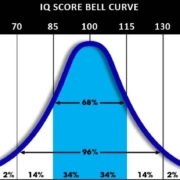On May 24 2016, an amended complaint was filed against the New York City Department of Education (“DOE”) for failing to do enough to address bullying and violence in its schools. Under pressure from New York State, the DOE has put into place several regulations meant to address in-school violence. [Full disclosure: The author of this post performed some work in this litigation.] The Complaint alleges that these regulations have been “ineffective” and “inadequate” to address the issues of violence in the nation’s largest school system. The Complaint details some of the statistics: a 23% increase in violent incidents in the school system in the last year; since 2014, forcible sex offenses increased 90%; assault with serious physical injury rose by 48%; and reckless endangerment rose by 28%.
Children with disabilities have added protection under the Individuals with Disabilities Education Act (“IDEA”). Students who are classified as children with disabilities are entitled to a Free Appropriate Public Education (“FAPE”). Recently, courts and the Office for Civil Rights (“OCR”) have stated that bullying may rise to the level of preventing a child with a disability from obtaining a “meaningful educational benefit” under the IDEA, a violation of FAPE. Regardless of whether the student is being bullied based on her disability, schools must still address the issues to ensure the child continues to receive FAPE. Furthermore, the remedy should not burden the child who is being bullied. It is common for schools to “punish” the victim by moving the victim to another school, sometimes calling it a “safety transfer.”
A common misconception is that bullying has to be physical. But in reality, the Office of Special Education and Rehabilitative Services (“OSERS”) defines bullying as being “aggression used within a relationship where the aggressor(s) has more real or perceived power than the target, and the aggression is repeated, or has the potential to be repeated, over time.” Bullying can consist of physical behaviors or verbal, emotional, or social behaviors (e.g., excluding someone from social activities, making threats, withdrawing attention, destroying someone’s reputation) and can range from blatant aggression to far more subtle and covert behaviors. Cyberbullying, or bullying through electronic technology (e.g., cell phones, computers, online/social media), can include offensive text messages or e-mails, rumors or embarrassing photos posted on social networking sites, or fake online profiles.
Many parents of bullied children do not even know that the DOE regulations were put in place; nor that there are added protections afforded to children with disabilities. But parents need to know that they can use these tools to pressure resistant schools who are not adequately addressing the bullying issues their children are having. This Blog will continue to address the issue of bullying and what parents can do to help their children. If parents have specific concerns, they are encouraged to use the “Contact Us” feature on this website.
#FAPE #IDEA #IndividualswithDisabilitiesEducationAct #FreeAppropriatePublicEducation #SafetyTransfer #OSERS #OfficeofSpecialEducationandRehabilitative #cyberbullying #bullying #OfficeforCivilRights #OCR #DOE







